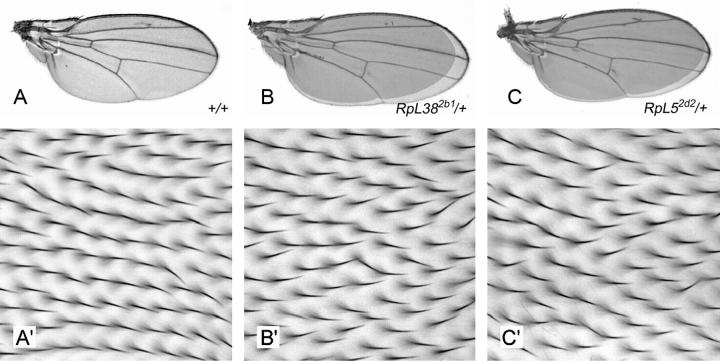Figure 6.—
Wings heterozygous for RpL38 or RpL5 mutations are increased in final size because of larger cell size. (A) Wild-type control wing. A small amount of ectopic vein tissue near the distal tip of vein II is often seen in both the w1118-iso and Oregon-R strains when reared at 25° under uncrowded conditions. Note that flies reared at 25° grow to smaller final sizes than those reared at 18°. For this reason the +/+ (25°) wing shown here is smaller than the RpL38NC21/+ (18°) wing in Figure 4A; flies of these genotypes have wings of the same size when reared at the same temperature (data not shown). (B and C) Wings heterozygous for RpL382b1 (B) or RpL52d2 (C) are larger than control wings. A silhouette of the control wing shown in A is overlaid to allow direct comparison. (A′–C′) High-magnification views of part of the wing region bounded by vein IV, vein V, the posterior cross-vein, and the wing margin from flies of the respective genotypes in A–C. The increased spacing between wing hairs in B′ and C′ compared to the control (A′) reflects the larger cell size in these wings as each wing-blade cell protrudes a single hair.

